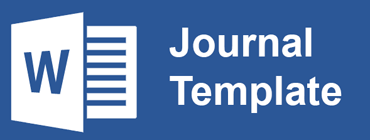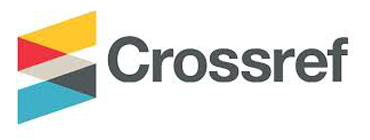THE EFFECT OF WEBBING STRATEGY TO IMPROVE STUDENTS’ READING COMPREHENSION AT THE TENTH GRADE OF MAS MUHAMMADIYAH SEI APUNG JAYA
Abstract
Full Text:
PDFReferences
Ary, Donald., Lucy Cheser Jacobs, and Chris Sorensen. (2010). Introduction To Research in Education. Canada: Wadsworth Cengange Learning.
Brown, H. Douglas. (1994). Teaching by Principles: An Interactive Approach to Language Pedagogy. New Jersey : Prentice Hall Regents.
Ceranic, Helena. (2014). Panduan Bagi Guru Bahasa Inggris. Jakarta: Erlangga.
Denton, C. Bryan, D. Wexler, J. Reed, D. & Vaughn, S. (2007). Effective Instruction for Middle School Students with Reading Difficulties. (https://teachingenglish4all.wordpress.com/, accessed on September 22, 2020)
J, Cooper. (2000). Literacy Helping Children Construct Reading. The fourth edition. Boston : Houghton Mifflin Company.
John W. Cresswell. (2008). Educational Research (Third Edition). New Jersey: Pearson Education.
Larry, Harris A and Smith B Carl. (1986). Understanding Reading Problems Assessment and Instruction. New York: Macmillan.
Manser, Martin H. Oxford Learner’s Pocket Dictionary. Oxford: Oxford University Press.
Muhidin, Aeng. (2017). Statistika Pendidikan: Pendekatan Berbasis Kinerja. Pamulang: UNPAM Press.
Patel, M.F. (2008). English Language Teaching, (Methods, Tools, and Techniques). Jaipur: Sunrise publishers.
Richard, Jack., Jhon Platt and Heidi Weber. (1986). Longman Dictionary of Applied Linguistic. RELC Journal. Vol 17(2)
Ruzic, R & K. O’ Connell. 2001. Concept Maps. Accessed on September 2020
Van den Broek, P., & Espin, C. A. (2012). Connecting cognitive theory and assessment: Measuring individual differences in reading comprehension. School Psychology Review, Vol 41(3)
Zaid, Mohammed Abdullah. (1995). Semantic Webbing in Communicative Language Teaching. Open Educational Web, Vol 33(3)
Refbacks
- There are currently no refbacks.

This work is licensed under a Creative Commons Attribution-NonCommercial-ShareAlike 4.0 International License.
INDEXING
Bright Vision by UIN Sumatera Utara Medan is licensed under a Creative Commons Attribution-NonCommercial-ShareAlike 4.0 International License.
Based on a work at http://jurnaltarbiyah.uinsu.ac.id/index.php/brightvision.









